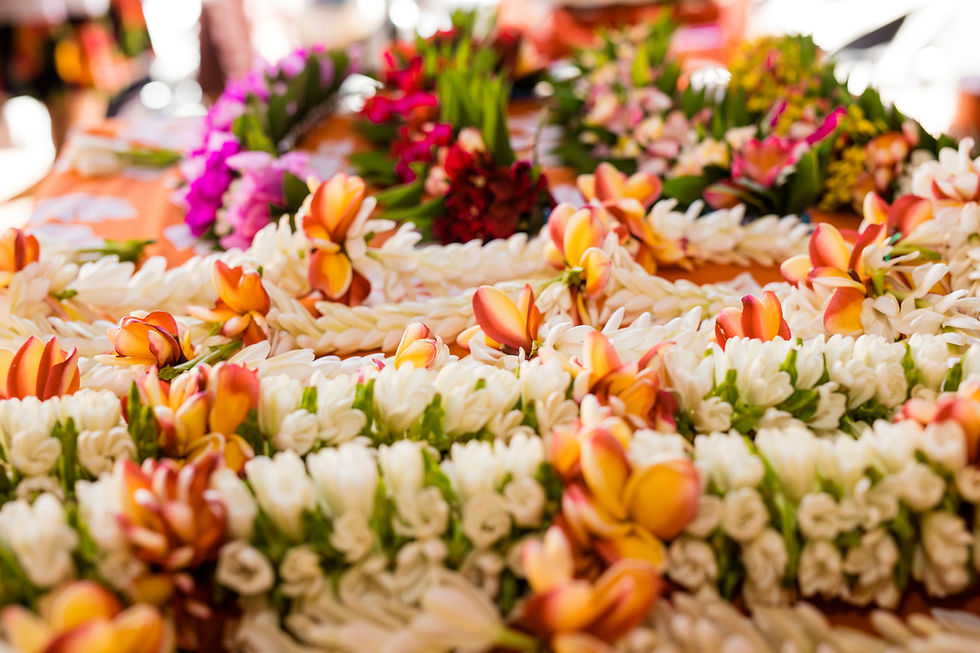The charm of Tahitian black pearls: history and cultivation in French Polynesia
- loureibel
- Aug 18
- 3 min read
In the heart of the Pacific Ocean, surrounded by turquoise lagoons and volcanic landscapes, blooms a unique gem of the world: the Tahitian black pearl. More than just a coveted object, this marine jewel embodies the cultural, spiritual, and natural soul of French Polynesia. In this article, we explore its fascinating history, the precise art of its cultivation, and the most exclusive places where you can discover it in its original environment.

History of an timeless polynesian symbol
Although pearls have captivated civilizations worldwide for centuries, in French Polynesia, their history takes on a deeply symbolic hue. For centuries, pearls were accidental discoveries, found by fishermen in their daily lives in the reefs and lagoons. These rare and mysterious natural pearls were considered divine gifts, status symbols, and protective talismans.
The true beginning of pearl farming, the art of cultivating pearls in a controlled manner, began in the second half of the 20th century. In 1961, French researcher Jean-Marie Domard, inspired by methods developed in Japan by Mikimoto, successfully implanted a nucleus in a Pinctada margaritifera oyster from the South Pacific.
The first pearl farm in French Polynesia was officially established in 1968 on the Manihi Atoll, part of the Tuamotu Archipelago. This milestone marked the start of a sophisticated and sustainable industry, deeply tied to local traditions and the marine environment. Since then, the Polynesian lagoons have become home to some of the world's most prized pearls.
The creation process: patience and mastery in every pearl
Each Tahitian black pearl is a masterpiece of nature and time, carefully shaped by human hands. The cultivation process follows a demanding ritual that reflects the delicacy and respect for the marine environment.
Selection of OystersThe black-lipped oysters (Pinctada margaritifera) are raised in protected hatcheries for more than a year and a half. Only the healthiest and most resilient are chosen for the grafting operation.
Nucleus ImplantationExpert technicians implant a spherical nucleus made of mother-of-pearl, along with a small fragment from another oyster's mantle. This gesture requires surgical precision, as it determines the future shape, color, and quality of the pearl.
Maturation in the LagoonFor 18 to 30 months, the oyster slowly secretes layers of nacre over the nucleus. This natural and patient process results in unique hues and reflections, varying with water temperature, salinity, and light.
Harvesting and ClassificationOnly a portion of the harvested pearls meet the excellence standards required by high jewelry. They are meticulously classified based on criteria like luster, diameter, shape, and surface texture.
Where to discover the best pearl Farms
While the name "Tahitian Pearl" is widely recognized, the most iconic pearl farms are found in remote, preserved atolls of other Polynesian archipelagos, where nature still reigns supreme.
Tuamotu Archipelago
Manihi, home to the first pearl farm, remains a benchmark. Other atolls like Rangiroa and Ahe offer tours of farms where visitors can observe the grafting process, converse with artisans, and purchase certified pearls directly. These warm, crystal-clear lagoons are ideal for producing richly colored pearls.
Gambier Archipelago
Located at the southern tip of the Polynesian territory, the remote Marutea Atoll is famous for the purity of its waters and the exceptional quality of its pearls. The cooler climate encourages the appearance of soft colors like silvery gray, olive green, and nacreous bronze. The farms here operate in total harmony with an almost pristine environment, ensuring pearls of unparalleled rarity and prestige.
The black pearl: a jewel of the polynesian soul
The Tahitian Black Pearl is much more than a luxury item: it is a tangible manifestation of the harmony between nature and Polynesian culture. Its history, from the serendipitous discovery to sophisticated pearl farming, reflects the passion, patience, and respect that this unique land inspires.
Visiting a pearl farm in Bora Bora or its neighboring islands is a unique experience, a sensory and private immersion into the heart of Polynesia, allowing you to appreciate the craftsmanship and environment that make the creation of these exceptional pearls possible.






